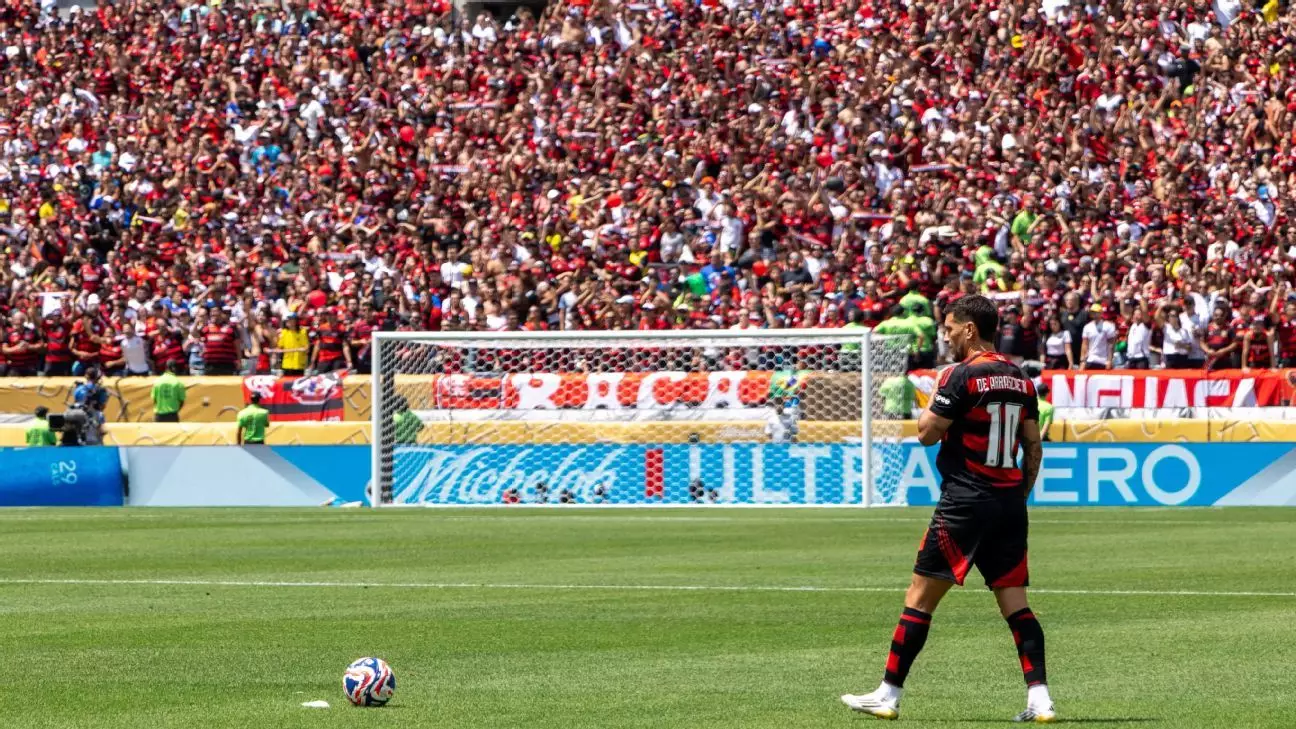Brazil’s aspiration to host the next FIFA Club World Cup presents a thrilling possibility that could redefine soccer’s global landscape in 2029. The inaugural 32-team event brought both excitement and trepidation following its kickoff, highlighting severe logistical oversights amid the grandeur of the tournament. Matches have been marred by fewer fans than expected and climate challenges that threaten the players’ stamina. Yet, this competition has not only survived but thrived because of the unmistakable fervor radiating from the South American clubs participating. Their fans have turned the United States into a carnival of noise and color, charging the atmosphere and reinforcing why this tournament is crucial.
Despite the turmoil, the South American representatives have effectively demonstrated resilience and competitiveness. As they journey through the tournament, the passionate Brazilian and Argentinian contingents have solidified their presence, both on and off the pitch. With five teams poised at the top of their groups, the vibrancy of South America’s soccer culture cannot be overstated. They have announced their arrival with pride, sending a bold message: this tournament is not just an exhibition; it holds significant weight, invoking the timeless clash of continents for supremacy in soccer.
The Drive to Excel Against the Odds
Historically, South American teams, particularly in club football, have been overshadowed by their European counterparts. The Copa Libertadores has served as the region’s equivalent to the UEFA Champions League for decades, born out of a desire to create a stronghold against European dominance. This craving for recognition and the validation of their prowess on the global stage lends an intense emotional weight to the performances of South American teams in competitions like the FIFA Club World Cup. The urgency to reclaim respect and challenge the footballing hierarchy is palpable—a burning passion that fuels their game and propels them forward.
The current predicament faced by South American teams is reminiscent of a powerhouse striving to reclaim its former glory. Recent years have seen disappointment in the Intercontinental Cup, a fixture that has served as a painful reminder of their comparative underperformance. However, this iteration of the Club World Cup presents a golden opportunity: their mid-season advantage, coupled with a fervent support base, may just turn the tide in their favor. South American teams have shown remarkable preparation, mirroring the discipline and focus of Olympic athletes readying for their moment in the spotlight.
Game Strategies and Technical Brilliance
On the tactical side, South American teams have offered a captivating array of strategies that reflect their unique identities. For instance, Flamengo surged forth in attacking prowess, guided by a calculated risk approach from their coach Filipe Luis, who smartly managed team fatigue during their Libertadores campaign. The acquisition of Jorginho offers a profound impact, providing a steadying influence and creative spark that connects the team’s numerous attacking talents.
Palmeiras, meanwhile, represents the modern ambition of club football in Brazil, exemplified by their recent record-breaking signings. Under the astute leadership of Abel Ferreira, the team has cultivated a meticulous playstyle that’s anything but flashy yet extremely effective. Their disciplined structure underscores a commitment to excellence, demonstrating that Brazilian football is not merely about flair; it embodies tactical sophistication, rigorous discipline, and the ability to adapt under pressure.
Botafogo’s epic triumph over Paris Saint-Germain has shattered stereotypes about Brazilian teams being solely focused on offensive exploits. Rather, their demonstration of robust defensive organization, combined with strategic attacking plays, showcases a mature evolution in their gameplay. The discipline exhibited in fending off PSG’s advances marked a significant evolution in South American football, affirming their potential and intent to compete at the highest levels.
Navigating the Challenges Ahead
As the tournament progresses, challenges abound for the South American clubs. With the intense heat of Pasadena looming over future matches, physical and mental endurance is crucial. The thin margins inherent in knockout competitions raise the stakes: a single early goal can turn the tide of a match and rattle even the most composed players. The upcoming matches will test their resilience, especially for teams like Palmeiras facing heavyweights such as Lionel Messi’s Inter Miami CF, and other pivotal encounters that may dictate the competition’s fate.
Additionally, the uncertainties surrounding team rosters due to suspensions spotlight the precarious nature of tournament soccer. Each match represents more than just points; it’s an opportunity for cultural exchange, national pride, and a chance to rewrite the narrative of South American football on the international stage. As each team steps onto the field, they aren’t just fighting for victories; they are vying for a legacy that resonates across continents—a chance to forge new paths and redefine their place in the world of football.


Leave a Reply